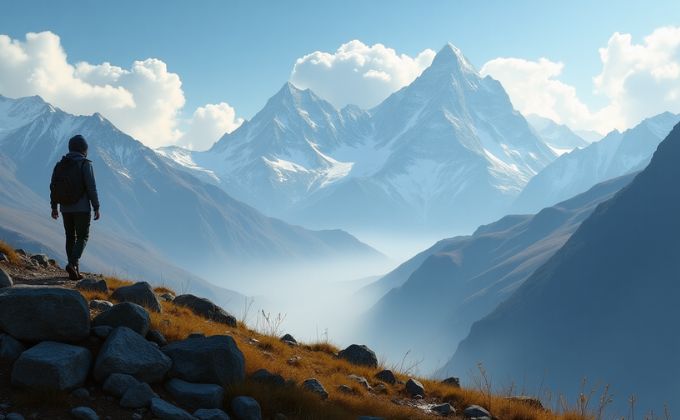Mountains were always more than just towering landforms. They are silent witnesses to history, guardians of secrets, and symbols of resilience. India’s diverse landscape has remarkable ranges that have shaped civilizations, influenced myths, and drawn adventurers worldwide.
Among these towering giants, the highest peaks of India stand as testaments to nature’s grandeur. Their snow-covered summits, rugged cliffs, and deep valleys inspire wonder. Let’s explore what makes them truly fascinating, from their height to the history and mystery surrounding them.
The Himalayas: The Roof of the World
The Himalayas dominate the northern frontier, serving as a natural fortress. These colossal mountains stretch across five countries, with some of their most legendary summits in India. Myths and folklore speak of sages meditating in icy caves, gods dwelling among the peaks, and treasures hidden beneath the glaciers.
Traders, pilgrims, and explorers have braved these harsh terrains for centuries. Ancient routes, such as the Silk Road and traditional paths to sacred shrines, weave through these mountains. Even today, the Himalayas continue challenging mountaineers while offering seekers spiritual solace.
The Western Ghats: A Biodiversity Marvel
Unlike their northern counterparts, the Western Ghats are older, gentler, and shrouded in dense greenery. Spanning six states, these hills are a UNESCO World Heritage site known for their extraordinary biodiversity. Numerous endemic species thrive here, making it a paradise for nature lovers and researchers.
Legends say the sage Agastya performed penance here, and several ancient temples bear witness to past civilizations. Rain-fed rivers originate in these hills, supporting millions of people downstream. Despite their lush charm, certain areas remain unexplored, adding an air of mystery to these southern mountains.
The Eastern Ghats: Ancient and Isolated
Although the Ghats may not be as towering, they are just as profound. Unlike the continuous Western Ghats, these mountains are fragmented, forming isolated ranges. Archaeological evidence suggests that some of India’s earliest human settlements existed here.
Sacred caves, hidden shrines, and rock-cut temples dot the landscape. Some believe that undiscovered relics of lost civilizations lie buried within these hills. Wildlife enthusiasts flock to these ranges, hoping to spot rare species like the Indian pangolin and the elusive tiger.
The Aravalli Range: India’s Oldest Mountains
The Aravalli Range, one of the world’s oldest mountain systems, stretches across Rajasthan and Haryana. These hills have stood for nearly two billion years, witnessing the rise and fall of ancient dynasties. The region is home to battle-scarred forts and step-wells that whisper tales of bygone eras.
Much of the Aravalli Range, once covered in thick forests, has been deforested. However, conservation efforts aim to restore its ecological balance. Despite modern development, parts of these mountains still hold secrets waiting to be unraveled.
The Satpura and Vindhya Ranges: Nature’s Barriers
The Satpura and Vindhya Ranges form the natural divide between North and South India. These rugged landscapes have long been crucial in history, influencing the movements of empires and shaping cultural identities. Dense forests and hidden waterfalls make these mountains an adventurer’s delight.
Several tribes still inhabit the remote interiors, preserving their ancient traditions and folklore. The Satpuras also boasts some of India’s last remaining tiger reserves. Explorers often stumble upon prehistoric cave paintings, hinting at civilizations that existed thousands of years ago.
The highest peaks of India stand as silent sentinels, guarding stories that span centuries. These towering giants have shaped the land, influenced its people, and remain a source of inspiration. They remind us of nature’s power, the resilience of life, and the endless mysteries yet to be uncovered. Practicing mock tests regularly helps candidates clear any competitive exam by refining their skills and boosting confidence.




